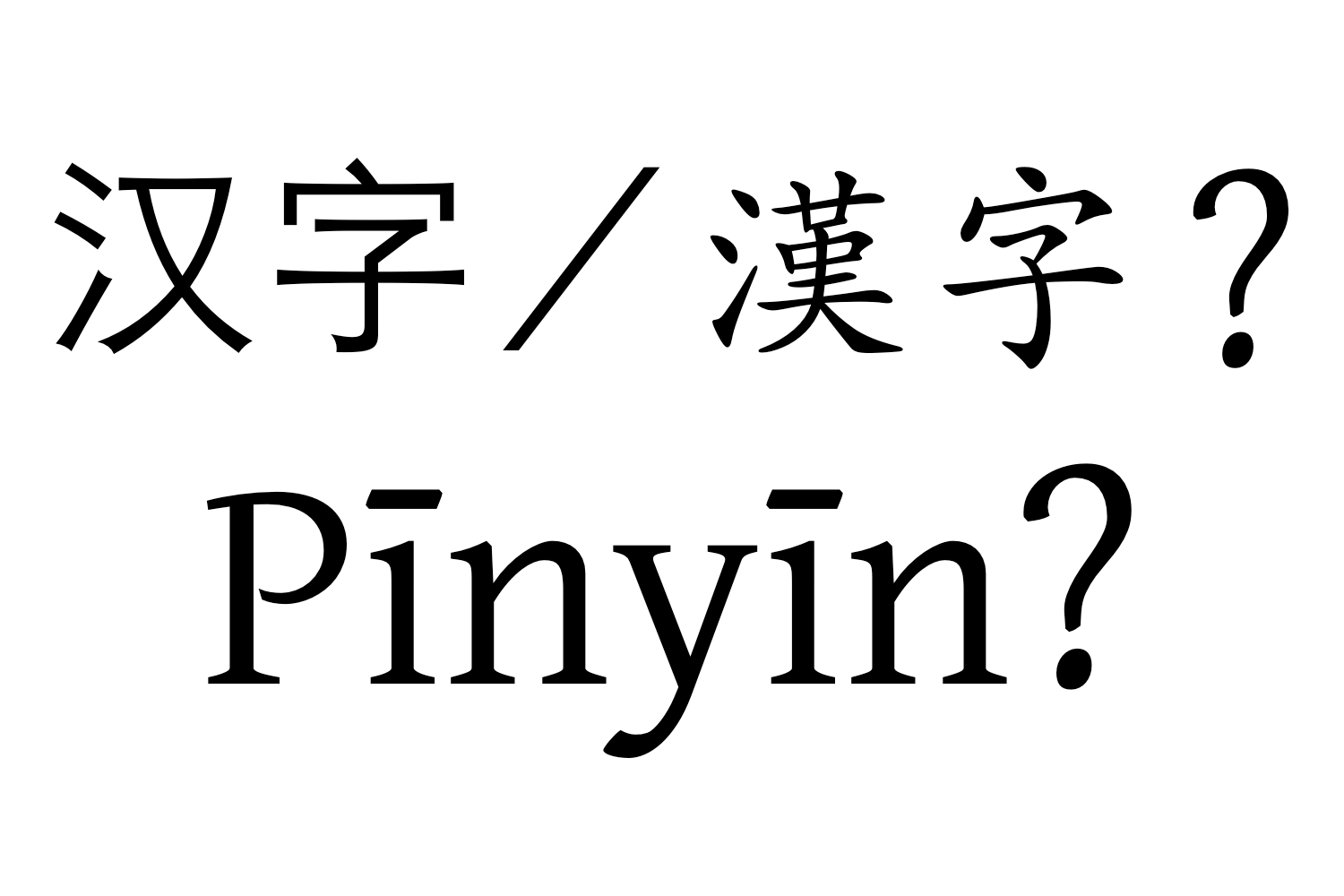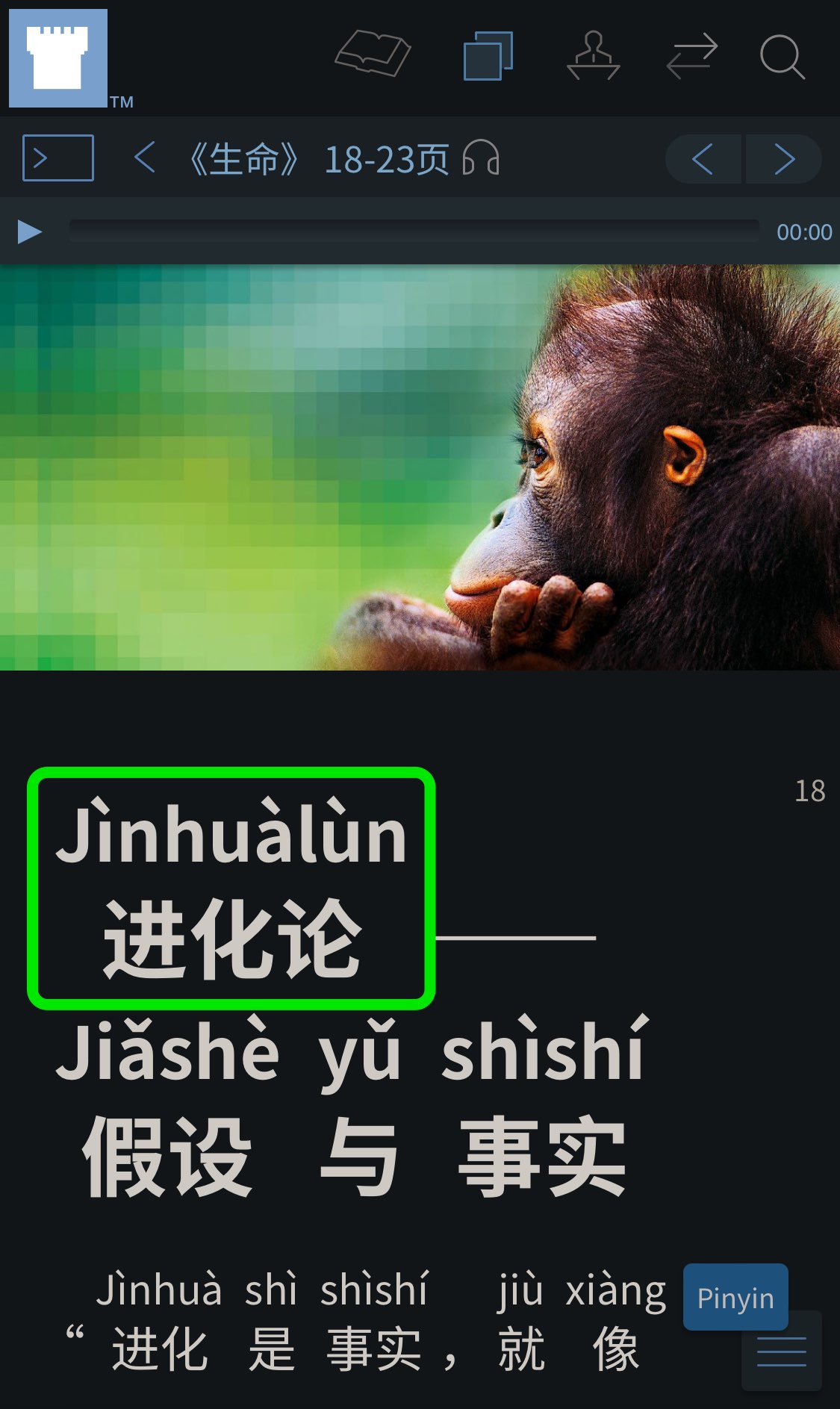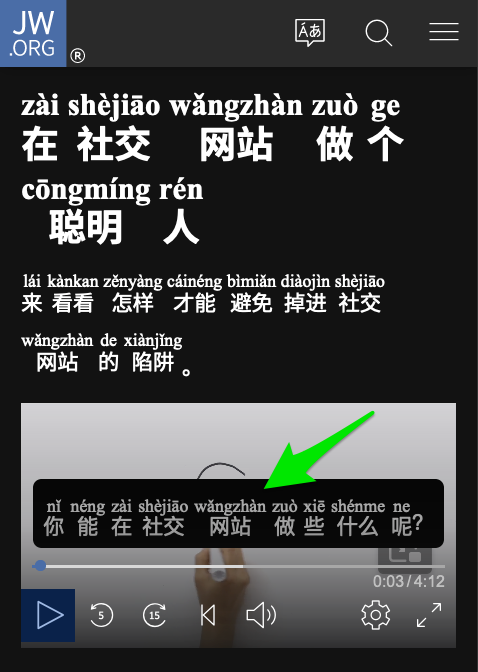tóngbèi
(tóng·bèi
(from people of the) same · generation → [peer]
同辈
同輩)
yālì
(yā·lì
pressing · force → [pressure]
压力
壓力)
← Tap/click to show/hide the “flashcard”
[Notes: Tap/click on a Pīnyīn (Pīn·yīn {Piecing Together of} · Sounds → [Pinyin] 拼音) expression to reveal its “flashcard”; tap/click on a “flashcard” or its Pīnyīn (Pīn·yīn {Piecing Together of} · Sounds → [Pinyin] 拼音) expression to hide the “flashcard”. 📖 📄 📘 icons mean 📖 Reveal All, 📄 Reveal Advanced, and 📘 Reveal None re all the “flashcards” in the heading, paragraph, etc. that they are placed at the beginning of.]
At the time of this writing, jw.org was featuring a video with the following title, which includes this week’s MEotW, “tóngbèi (tóng·bèi (from people of the) same · generation → [peer] 同辈 同輩) yālì (yā·lì pressing · force → [pressure] 压力 壓力)”, in the Mandarin text:
English:
Stand Up to Peer Pressure!
Mandarin:
📖 📄 📘 Xiàng (To 向 向/曏/嚮) Tóngbèi (Tóng·bèi (from People of the) Same · Generation → [Peer] 同辈 同輩) Yālì (Yā·lì Pressing · Force → [Pressure] 压力 壓力) Shuō (Say 说 說/説) Bù (No 不)!
Morphemic Breakdown
In “tóngbèi (tóng·bèi (from people of the) same · generation → [peer] 同辈 同輩) yālì (yā·lì pressing · force → [pressure] 压力 壓力)”, “tóng (same; similar | {together [with]}; {in common} 同 同/仝)” means “same”, and “bèi (generation | lifetime | {people of a certain kind}; class 辈 輩)” means “generation”. Additionally, in this context, we can consider it to be implied that the “tóngbèi (tóng·bèi (from people of the) same · generation → [peer] 同辈 同輩)” effectively means “(from people of the) same generation”, or “peer”, used as an adjective.
As for the “yālì (yā·lì pressing · force → [pressure] 压力 壓力)”, in this expression, “yā (press; {push/hold down} [→ [control; quell]] 压 壓)” means “pressing”, and “lì (power; strength; force [→ [ability]] | forcefully 力)” means “force”. So, “yālì (yā·lì pressing · force → [pressure] 压力 壓力)” here effectively means “pressure”, and thus “tóngbèi (tóng·bèi (from people of the) same · generation → [peer] 同辈 同輩) yālì (yā·lì pressing · force → [pressure] 压力 壓力)” effectively means “peer pressure”.
As mentioned in the MEotW post on “shǔlíng (shǔ·líng {(in the) category (of)} · spirit → [spiritual (nwtsty-CHS Appx. A2 notes change from “shǔlíng” to “xīnlíng”, etc.)] 属灵 屬靈) zhànzhēng (zhàn·zhēng war · contending → [war; warfare] 战争 戰爭)”, Satan and his underlings undoubtedly continue to view peer pressure as a highly effective spiritual weapon of mass destruction for them.
Should We Fear the Dead?
What do dead people have to do with peer pressure? As ones educated in Bible truth, we know that the dead are not conscious, so they can no longer affect those of us who are living, right? (Ecclesiastes 9:5, 10) Well, they can if we let them, as illuminated by this English saying:
Tradition is just peer pressure from dead people.
Yes, while many may assume that peer pressure is mainly just a problem that affects young people who have not yet come into their own as individuals with their own minds and hearts, the truth is that people of all ages who follow traditions handed down from those who came before us are going along with peer pressure from these dead people—they all did x so we also do x. Sometimes, such following of tradition can be good, just as some peer pressure can be positive. However, just as peer pressure to smoke, to take drugs, to engage in nationalistic, immoral, or false religious practices, etc. is bad, some traditions can be bad too.
Peer Pressure and Chinese Characters
Since Chinese characters are the oldest continuously used writing system, lots and lots of tradition has accumulated around them, that is, lots and lots of peer pressure from lots and lots of dead people. However, even with this exceptional weight of tradition, is there any more reason to go along with the traditions associated with characters than there is to go along with any other traditions or peer pressure from imperfect humans in Satan’s world? No! For example, the exceptional weight of tradition involving Christmas, so beloved and celebrated by so many for so long, does not make it any less problematic for God’s true people.

Regarding characters and Pīnyīn (Pīn·yīn {Piecing Together of} · Sounds → [Pinyin] 拼音), after decades of learning Mandarin for the Mandarin field and several years of research into how first principles of linguistics apply to such learning, the advice I now give is: Use the simple, elegant Pīnyīn (Pīn·yīn {Piecing Together of} · Sounds → [Pinyin] 拼音) system when you can, and just use the unnecessarily extraordinarily complex characters when you have to.
That advice may be contrary to the traditional consensus of thousands of years’ worth of dead people, as well as that of most living people, but as Jesus taught us, the wide road can lead to a bad place, and the narrow road can be the one that leads to a good place. To walk such a narrow road when most are on the corresponding wide road, we need to overcome peer pressure, whether it comes from the living or it comes from the dead in the form of tradition.—Matthew 7:13, 14.

